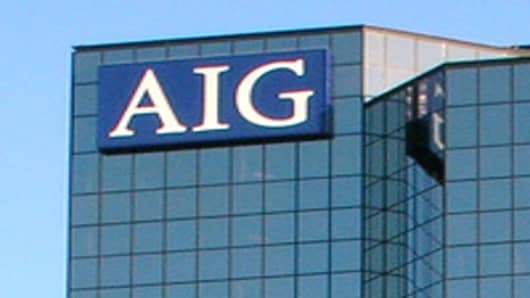The Obama administration is pressing aggressively for a deal to end its support of the American International Group and hopes to have a completed plan to announce by next week, ahead of the midterm elections.
The goal is for the Treasury Department to convert its A.I.G. stake to common stock in a deal that would be completed by the end of the year, according to two people briefed on the negotiations but not authorized to discuss them publicly. The Treasury would sell those shares to private investors over time.
Breaking away from A.I.G. will be a tough and complicated process, in part because of the insurance giant’s fragile state and in part because several parties jumped in to save the company in 2008 and used different forms of assistance.
Officials working on the exit plan are seeking a way for the various rescuers to pull out without damaging one another’s interests in the company.
The company has been negotiating for weeks with officials from the Federal Reserve Bank of New York and the Treasury, as well as with representatives for a trust holding A.I.G. stock that was set up on behalf of the nation’s taxpayers.
All three parties would like to end their relationship with A.I.G. as soon as possible.
If they sell their shares too quickly, though, it could drive down the company’s market value, which in turn determines the amount of money that will be returned to taxpayers. A.I.G.’s stock closed at $37.32 on Tuesday, less than 5 percent of its value three years ago, a sign of the market’s relatively low expectations for it.
The government now owns 80 percent but would have to increase its stake to more than 90 percent as part of the exit plan being developed, according to the two people briefed on the talks. The prospect of such a dilution could damp interest among potential shareholders.
A rapid exit by the government could also lead to a credit downgrade, which would hurt the company’s ability to sell insurance. To close the deal by the end of the year and avoid a downgrade, A.I.G. will have to complete a number of steps.
Foremost is securing a credit facility from a bank to replace the one now provided by the Federal Reserve Bank of New York, the people briefed on the negotiations said.
As part of the deal, the Treasury will convert its preferred shares into billions of dollars’ worth of common stock. Underscoring the risks of huge government bailouts, the government may be forced to sell its stake very slowly. And it is not at all clear that the government will recoup its full investment, some analysts say.
“This market can’t support” a flood of shares, said Christopher Whalen, managing director of Institutional Risk Analytics. “The reality is that the government has become a long-term stakeholder.” He and others pointed out that while A.I.G. had made progress in its revamping, it had yet to pass certain milestones that would show it was ready to operate without government support.
It is still working on two crucial transactions that must close before it can repay the Fed — roughly $46 billion, $25.7 billion of it in preferred stock that must be redeemed, and $19.7 billion of rescue loans.
Analysts said it was hard to see how the insurer would generate that much cash by the end of this year, which parties to the negotiations said was the Fed’s deadline.
Officials at the Fed, whose stake in A.I.G. is senior to the Treasury’s, declined to discuss its intentions. Insurance regulators, meanwhile, said they planned to make sure that the federal government, in its efforts to be repaid, did not strip money out of A.I.G.’s insurance businesses or put policyholders at risk.
“The policyholders are our primary concern,” said James J.Wrynn, the New York State insurance superintendent. He said his department had not yet been presented with the terms of the deal.
But he said state insurance regulators had the power to approve or reject any transaction involving more than 10 percent of any insurance unit’s capital.
A spokesman for the insurer said its goal was to return taxpayer money and position itself as a strong, independent company, adding that policyholders would be fully protected. The flurry of work on the A.I.G. exit plan coincides with the Treasury’s recent announcements about some of its other bailouts.
The government has unveiled a plan to re-establish General Motors as an independent company, and Treasury officials expect to complete their sales of Citigroup stock by the end of the year.
A central dispute in the A.I.G. negotiations has been what the slimmed-down insurance company will be worth. The company has been selling many units and using proceeds from those sales to pay back the New York Fed. But the sales have gone slowly, and the terms have sometimes changed.
The value of A.I.G. will depend on how much cash its surviving businesses — the Chartis business insurance group and a family of life insurers under the name SunAmerica Financial — can generate over time.
A.I.G.’s management and its board have been arguing that the surviving company will be worth more than regulators believe, according to the two people briefed on the talks. To bridge this difference, the government has agreed to let the company issue warrants to its other shareholders.
If the stock zooms to a much higher price, say $100, private investors holding the warrants will benefit. The government and the company are negotiating over where to set that price, with the government intent on making it high enough to ensure it can also sell its stake at a profit.
Issuing warrants could also help persuade private shareholders to stay put, even though their stake would be further diluted when the Treasury converted its preferred stock to common shares. Keeping private shareholders from selling en masse is considered necessary to protect the taxpayers’ interest.


